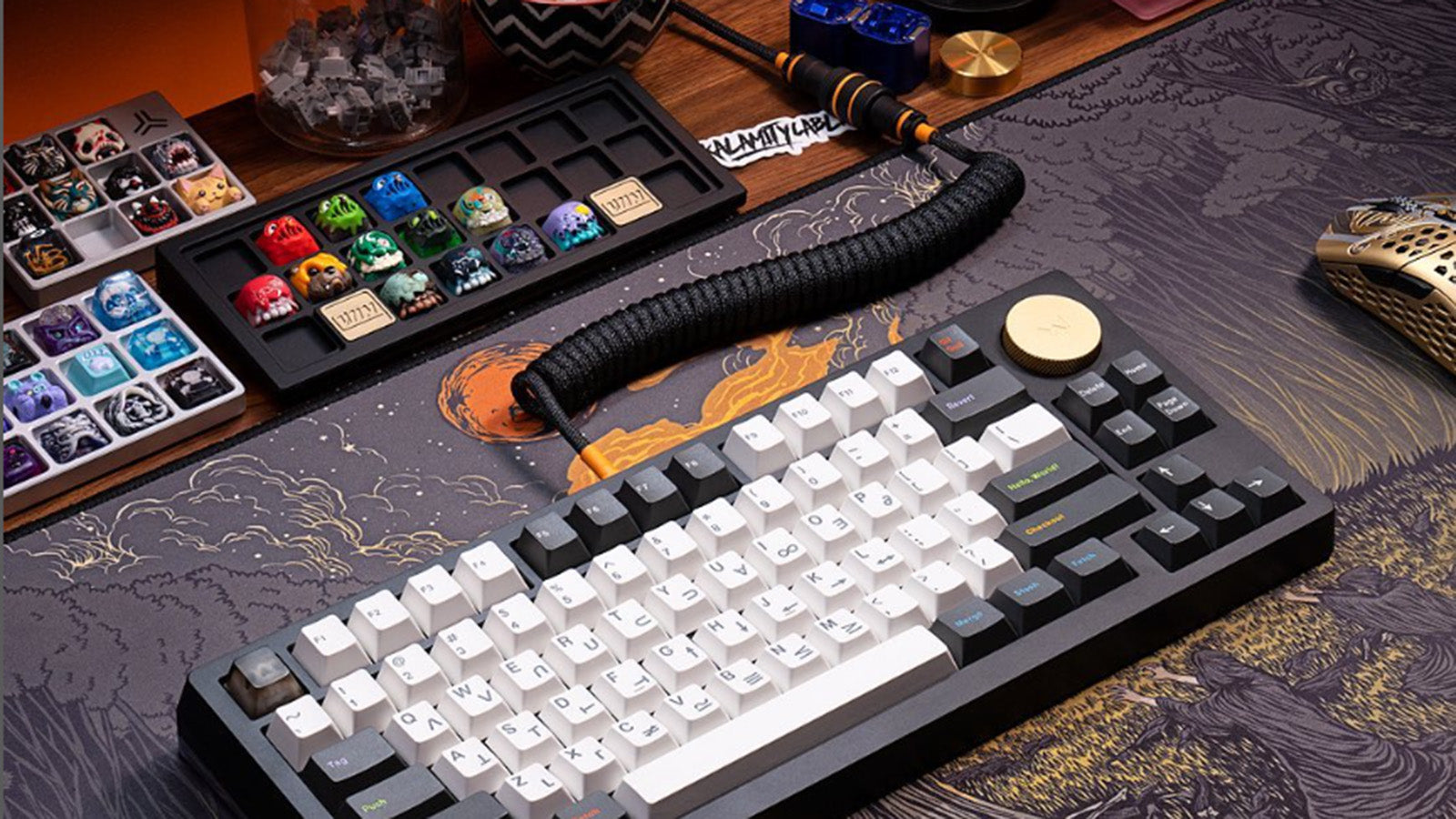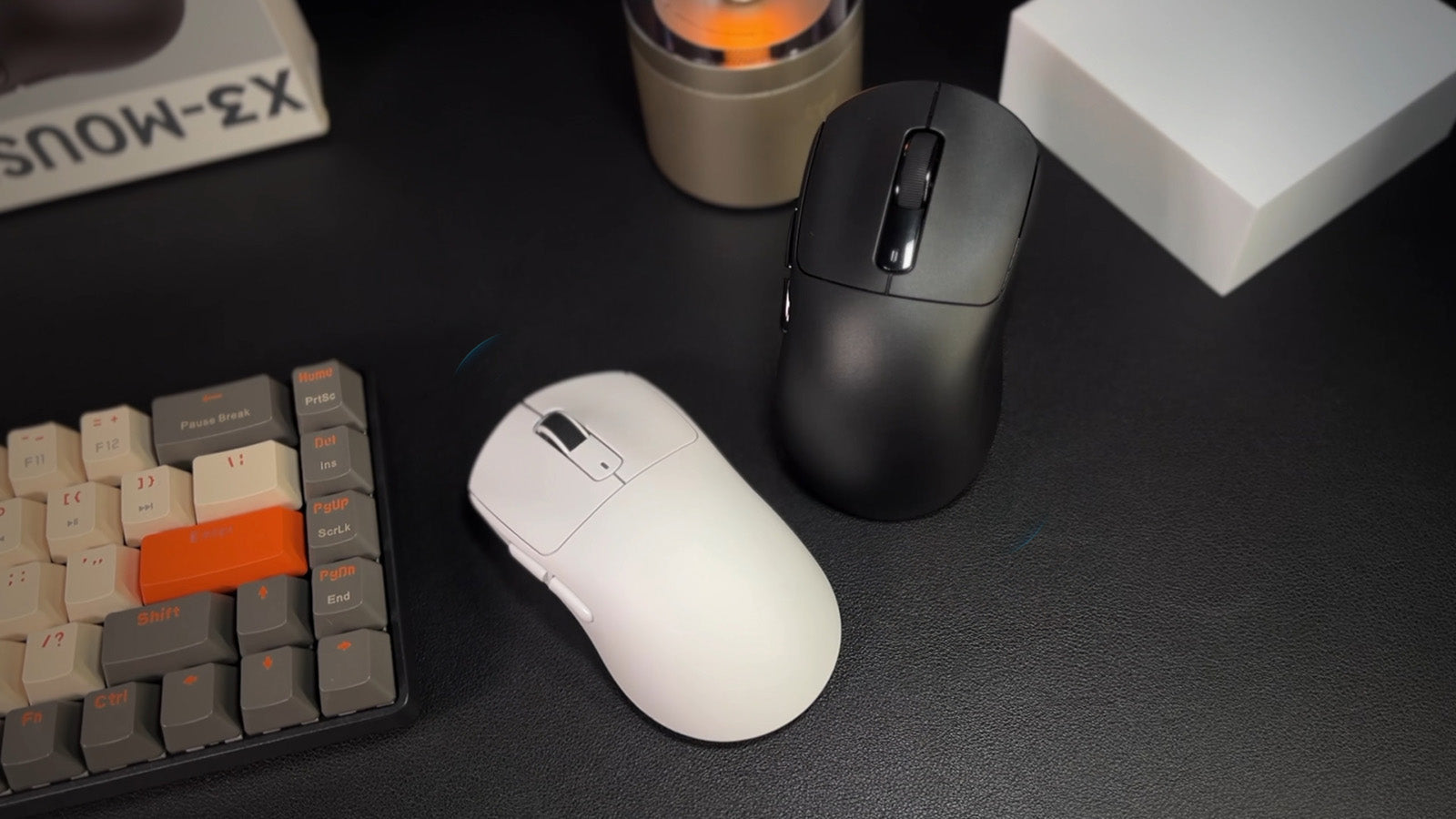Whether you're a hardcore gamer in need of responsive keys, a professional seeking day-long comfort, or simply someone navigating the vast digital world with casual clicks and clacks, this guide has got you covered. You can learn the diverse universe of keyboards-from the tactile delights of mechanical switches to the whisper-quiet presses of membrane keys, all the way through the ergonomic designs crafted for your utmost comfort. We'll help you understand the jargon and find a keyboard that not only matches your needs but enhances your daily interaction with the digital realm.
Keyboard Basics
First, establish a foundation of keyboard knowledge. A keyboard is more than just an array of buttons; it's your primary tool for interacting with your computer. As such, getting familiar with its basics is crucial for making an informed decision.
The Role of Keyboards in Computing
Keyboards are the bridge between you and your digital activities. Every keystroke sends a specific command to your computer, allowing you to type documents, navigate software, or obliterate virtual foes in a game. Over time, keyboards have evolved from simple typewriter descendants to sophisticated devices tailored for a wide range of tasks.
General Considerations When Selecting a Keyboard
When choosing a keyboard, you should think about size and layout. Full-sized keyboards come equipped with a number pad, function keys, and sometimes additional media controls, which are ideal for those who work extensively with numbers or appreciate quick-access buttons. Compact keyboards, on the other hand, ditch the number pad for portability, a boon for tight workspaces and users who travel.

Classified by Technology: Mechanical Keyboards and Membrane Keyboards
Mechanical Keyboards
Mechanical keyboards are celebrated for their reliability and customizability, making them a top choice for both typing purists and gaming enthusiasts.
Unique Features of Mechanical Keyboards
Each key in a mechanical keyboard is built with individual mechanisms called switches. These switches consist of several parts, including a base, a spring, and a stem. When you press a key, the stem pushes against the spring and closes an electrical circuit to send the input signal to your computer.
The Feel of Typing on a Mechanical Keyboard
Typing on a mechanical keyboard offers distinct tactile feedback and an audible click sound that many find satisfying. With a variety of switch types, such as linear, tactile, and clicky, users can choose the feel that best suits their preference, whether that's a smooth keystroke or one that provides a noticeable bump.
Advantages of Mechanical Keyboards for Typing and Gaming
Durability is one of the major advantages of mechanical keyboards; they're built to withstand tens of millions of keypresses. For gamers, this means enduring marathon sessions with consistent performance. For typists, it translates to a long-lasting tool that maintains its feel over years of use.
The precise control offered by different switch types means that whether you're programming, writing lengthy documents, or in the heat of an online battle, you'll have the accuracy and responsiveness you need.
Considerations Like Noise Level and Key Customization
Mechanical keyboards are known for their clicky sounds, which can be loud in quiet environments. Some switches are designed to be quieter, so consider your work environment when selecting your switch type.
Customization extends beyond just feel; with mechanical keyboards, you can often change the keycaps for a personalized look or improved ergonomics, swap out switches if your typing needs change, or even modify the layout for different languages or ergonomic setups.

Membrane Keyboards
These are known for their quieter keystrokes and more affordable prices, making them a common sight in offices and homes alike.
- Characteristics: Unlike mechanical keyboards, membrane keyboards use a different technology. Keys are not individual switches but rather part of a single membrane sheet. Pressing a key pushes down on a dome to connect the circuit to the membrane layer, registering the keystroke.
- Typing Experience: The typing experience on a membrane keyboard is notably softer and less clicky. This can result in a quieter environment, which is often appreciated in shared spaces. However, some users may find they require more effort to ensure each key press is registered, potentially leading to faster fatigue over long typing sessions.
- Ideal Use Cases: For those who type occasionally to moderately and prioritize a budget-friendly option, membrane keyboards are an excellent choice. They work well for general computer use, such as web browsing, office applications, and light gaming.
- The Cost-Benefit Analysis: Membrane keyboards tend to be lighter on the wallet compared to their mechanical counterparts. They're also generally lighter in weight, making them more portable. However, this cost-saving does come at the expense of the longevity and responsive feel that mechanical keyboards offer.

Three Popular Keyboard Types
Ergonomic Keyboards
Ergonomic keyboards take a user-centered approach, focusing on a more natural hand position to prevent strain and injury.
- Keyboard Design: Ergonomic keyboards come in various shapes and layouts, but their main goal is consistent: to maintain a more anatomically correct position while typing. They often feature a split design that allows each hand to type at a slight angle, which is a more natural posture and reduces stress on the wrists and forearms.
- Various Layouts: From gently curved frames that cradle your hands to fully split models that can be positioned to your liking, ergonomic keyboards provide options to suit different preferences. Some even incorporate tenting, where the center of the keyboard is slightly elevated to create a more relaxed wrist angle.
- Prevent Strain Injuries: Extended keyboard use can lead to repetitive strain injuries (RSIs), such as carpal tunnel syndrome. Ergonomic keyboards aim to counteract the risk by reducing awkward movements and allowing your hands and wrists to rest in a more neutral position.
Wireless Keyboards
Wireless keyboards are the cutting-edge solution for a clutter-free desk and the flexibility to type from anywhere within range.
Wireless Convenience
The primary appeal of wireless keyboard lies in their lack of cables, freeing you from the tether of a wired connection. This freedom allows for a tidier workspace and easier portability. You can effortlessly shift your typing location without being bound by the length of a cord.
Bluetooth vs. RF Keyboards
Wireless keyboards typically connect through Bluetooth or a dedicated RF receiver. Bluetooth keyboards can pair with multiple devices, such as tablets and smartphones, making them highly versatile. RF keyboards often boast a more stable connection and usually come with a small dongle that plugs into your computer's USB port.
Battery Life
The convenience of wireless typing does come with the need to manage battery life. Some wireless keyboards use replaceable batteries, while others include built-in rechargeable ones. It's important to consider how often you're willing to charge or replace batteries when opting for a wireless model.
Wireless Keyboards in Different Scenarios
Wireless keyboards are ideal for those who prefer a minimalist setup or work in multipurpose spaces. They are also a boon for presenters, allowing them to control their slides from across the room. Additionally, in living rooms or communal areas, they can connect to smart TVs for easy browsing from the couch.

Gaming Keyboards
Gaming keyboards are engineered to offer features that can enhance gameplay and provide an edge in competitive environments.
Specialized Features for Gaming Experience
Gaming keyboards often incorporate specialized features such as N-key rollover (allowing multiple keystrokes at once) and anti-ghosting capabilities (ensuring every key press is registered). These features prevent missed inputs during critical moments, which is crucial for gamers who require precision and reliability.
Backlighting
Backlighting has become synonymous with gaming keyboards, not only adding to their visual appeal but also serving practical purposes. Adjustable RGB lighting can highlight specific keys for gaming, reduce eye strain in low-light environments, and even sync with game events for immersive play.
Programmable Keys
Many gaming keyboards come with programmable macro keys. These can be configured for complex key sequences with a single press, providing quick access to frequently used commands and abilities, which is particularly useful in strategy and MMORPG games.
The Durability and Response Time Factor
Gamers put their keyboards through paces that far exceed typical typing demands. Gaming keyboards are designed with this in mind, often built with more durable materials to withstand rigorous use. Also, they have faster response times to ensure that the action on the screen corresponds instantly with keystrokes.

The Key to Finding Your Perfect Keyboard
Choosing the right keyboard is deeply personal. Whether you're after the tactile satisfaction and durability of mechanical keyboards, the quiet and economic efficiency of membrane types, the health-focused designs of ergonomic keyboards, the untethered freedom of wireless models, or the customizability of gaming keyboards, there's a keyboard out there that's tailored to your fingers. Of course, you can also consider choosing the ATTACK SHARK keyboard. Their keyboard integrates multiple designs and can meet your various needs at the same time. By considering factors such as typing feel, noise level, portability, and additional features relevant to your use case, the perfect keyboard can transform your computing experience, blending seamlessly with your lifestyle and needs.






Leave a comment
This site is protected by hCaptcha and the hCaptcha Privacy Policy and Terms of Service apply.